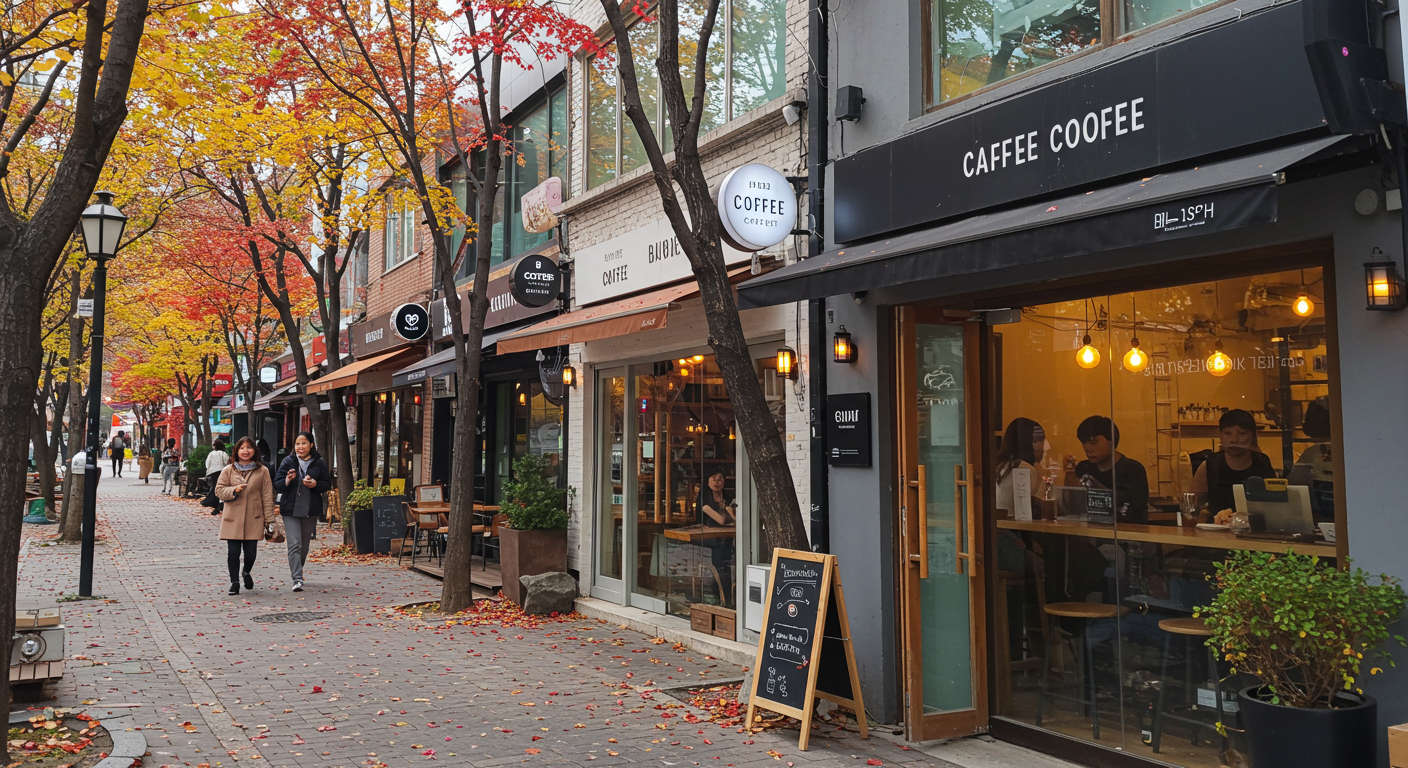Introduction – “Why Are There So Many Cafés?”
First Impressions of Korean Café Culture
One of the first things that surprised my foreign friend upon arriving in Korea was the sheer number of cafés. Every street, every alley seemed to have one—and not just chain stores, but uniquely styled spaces. “Why are there so many?” he asked. It turns out, this wasn’t just about coffee—it was a window into the rich and layered Korean café culture.
First Encounter – Coffee Comes Second
Cultural Shock in Emotional Café Spaces
He was invited to a so-called “emotional café.” Inside, it looked more like an art gallery than a coffee shop—soft lighting, dried flowers, vintage decor. “Are we really supposed to drink coffee here?” he laughed, but soon felt at ease.
In Korea, emotional café spaces offer more than caffeine—they serve as cozy hideaways for people to retreat from the speed of everyday life.
Observation and Adaptation – Choosing by Feeling
Mood-Based Spaces – Aesthetic Coffee Shops in Korea
Over time, he began to choose cafés not based on the drinks, but on how he felt that day. If he needed warmth, he chose a dimly lit spot. If he felt energized, a rooftop with sunlight. These aesthetic coffee shops in Korea weren’t just about looking pretty—they were emotional mirrors, helping people express and manage how they felt.
A Moment of Empathy – Discovering Ownership of Space
“This Is My Space” – The Emotional Ownership in Korean Café Culture
One rainy afternoon, he walked into a familiar café tucked in a quiet alley. His usual seat by the window was free, bathed in warm light with soft jazz playing in the background. As he sipped his coffee, it hit him: “This is where I feel like myself.”
Korean café culture isn’t just about drinks—it’s about creating emotional cafe spaces where one’s inner world can safely rest. He didn’t have to speak or explain; the space itself allowed him to simply be.
Around him, others were doing the same. Some reading, others typing on laptops, some just staring out the window. Each person was in quiet communion with the space. He realized then that Korean cafés were more than trendy places—they were “social shelters” and “emotional sanctuaries.”
Conclusion – Coffee with a Side of Reflection
A Cup of Coffee, A Slice of Self – What Korean Café Culture Leaves Behind
Now, he remembers those cafés not for their coffee, but for how they made him feel. A daily rhythm, a place to process thoughts, a quiet break from the world—Korean café culture gave people the freedom to slow down, reflect, and reconnect with themselves.
Even now, far from Korea, he finds himself longing for “his spot”—that corner seat in a cozy café that knew how to hold his silence.
Enjoyed this read? Check out these stories too.-Korean Office Fashion – The Unspoken Uniform of Commuting Workers
